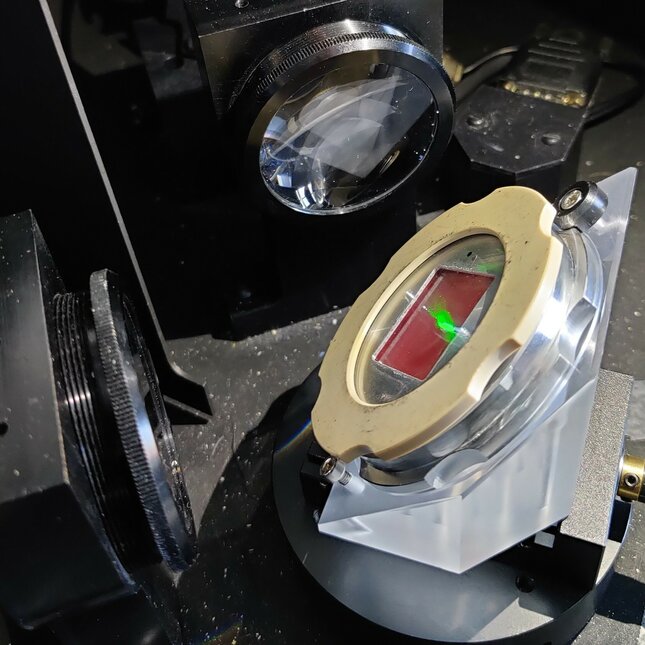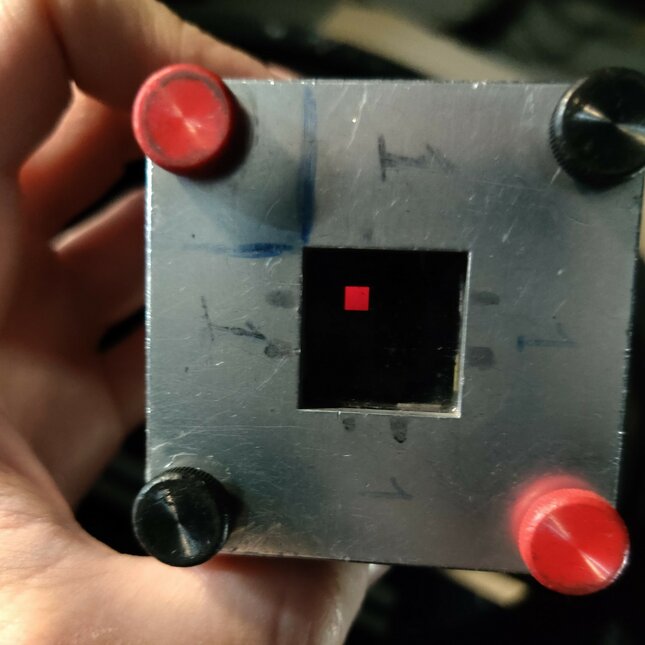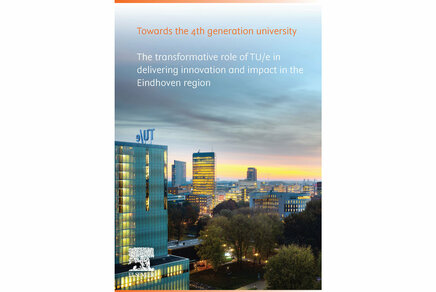On the intricacies of optoelectronic characterization of thin-film semiconductors
Tom van der Pol studied the presence, origin, and influence of defects in organic and metal-halide perovskite semiconductors for application in thin-film solar cells.

Semiconductors are ubiquitous in today’s society being the crucial component in chips, displays and solar cells. Unfortunately defects exist in semiconductors that negatively impact performance. Especially for new solar cells based on thin films, these defects hinder further improving the efficiency, making it imperative to study them. However, “to measure is not to know” was an often recurring finding in the PhD project of Tom van der Pol working in the M2N Research group at TU/e. In his work Tom van der Pol studied the presence, origin, and influence of defects in organic and metal-halide perovskite semiconductors for application in thin-film solar cells.

Measuring defects is often done using light and is not easy due to the scarce nature of defects in good semiconductor samples. What complicates matters further is that the films under study have thicknesses comparable to the wavelength of light, resulting in interference of light inside the layer. This interference will influence the absorbed or emitted light in a non-intuitive way, simply said: “what you see is not what you’ve got”.
The influence of interference and absorption of emitted light as its exiting the layer on the experimental emission spectrum are well known for organic light-emitting diodes, but these effects generally haven’t been considered in the characterization of other thin-film semiconductors and devices.
Correcting for extrinsic effects
Tom van der Pol developed modeling procedures to predict and correct for these effects and applied the procedure to measurements of photoluminescence, electroluminescence, and sensitive photocurrent spectroscopy. Spectra for identical semiconductor films that only differ in thickness showed distinctly different shapes and peaks but could be traced back to the same intrinsically emitted spectrum. Van der Pol demonstrated that his modeling procedure was successful in retrieving the intrinsic spectrum.

Using the intrinsic spectrum and leveraging interference
Application of the modeling procedure on measured spectra enables better characterization of semiconductor film and devices. For instance, for an organic solar cell the results were used to understand the effect of processing on the performance.
Additionally, it occurred to van der Pol and Bas van Gorkom, a fellow PhD student, that the influence of interference on the photocurrent spectra contains information on the spatial distribution of the defects. By purposely altering the light interference inside a device using a spacer−mirror assembly, they were able to determine the location of these defects. The successful leveraging of interference effects signified a change in perspective that complimented a study on the origin and nature of defects in organic solar cells.

The physics of defects in metal-halide perovskites
Keeping in mind the influence of interference effects, van der Pol together with Guus Aalbers, a master student at that time, were able to relate the electroluminescence and photocurrent spectra of defects present in metal-halide perovskite devices. Thereby they could experimentally assess the radiative ideality factor of these defects, which they found to be varying with the defect energy. Their findings could not be described with traditional diode models so they developed a new many-diode model. By applying their new model, they found that the observed defects themselves do not contribute to voltage losses in these solar cells but are correlated to other voltage losses.
The more detailed understanding of spectral characterization of thin films, as developed in this PhD thesis, is expected to enable better analysis of thin-film semiconductor films and devices. Van der Pol already acquired several new insights into the defects in state-of-the-art materials.
Title of PhD-thesis: The Optoelectronic Characterization of Organic and Perovskite Thin-Film Semiconductors and Photovoltaic Devices. Supervisor: Prof. dr. ir. René Janssen, TU Eindhoven,
More on Sustainability



Latest news

![[Translate to English:] [Translate to English:]](https://assets.w3.tue.nl/w/fileadmin/_processed_/e/6/csm_Hendriks%20Banner%20image%20Photonic%20crystal%20fiber-tip%20sensor%20BvOF_9b4093b84b.jpg)
